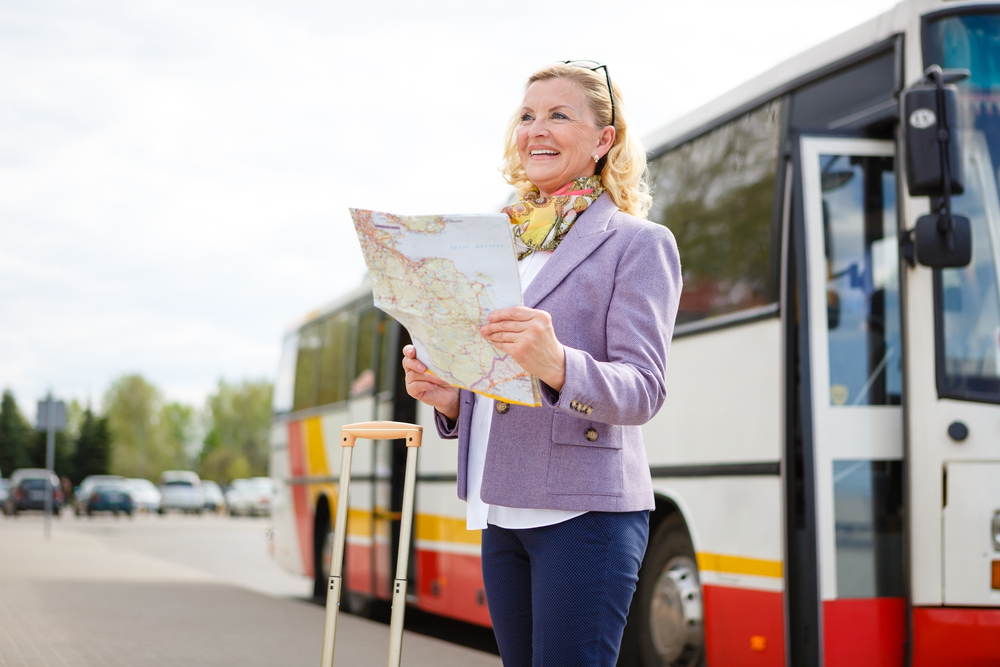These budget-friendly travel tips can save you big bucks on your next trip!
We all love traveling and exploring new places. But the sad truth is that vacations usually take a back seat to other obligations we have in our lives. Why? Well, I think it’s due to several things. Among them, money is often mentioned as a huge deal-breaker.
It’s the main reason that inhibits most of us from going out and exploring the most exotic places. Well, I can tell you one thing for sure: Exploring new places around the US doesn’t require a fortune, and you don’t have to win the lottery to travel, at least, not if you know how to watch your pennies.
At the end of the day, which destination you pick doesn’t matter. With better planning, you can make that holiday a reality. So, on that note, here are 6 budget-friendly travel tips for traveling around the US when you’re not exactly swimming in money!

Budget-friendly travel tip: Take advantage of free admission to national, state, and city parks
Most famous national parks around the US charge an entrance fee of about $30 to $35, which covers a vehicle and its occupants for a week. You can save about 15 bucks if you bike or hike into the park. The National Park Service even offers five “fee-free” days yearly.
So be sure to check park websites for more information. There are also a bunch of free national parks, too, including Great Smoky Mountains National Park (which only charges you $5/day for parking), New River Gorge National Park in West Virginia, Great Basin National Park in Nevada, and Congaree National Park in South Carolina.
And remember that state parks often rival national parks for the quality of their vistas, and entrance fees are generally under $10. You should also know that all state parks in West Virginia have free admission. City parks are free, and larger ones offer many outdoor recreation and camping opportunities.
Pro Tip: Multi-use greenways and rail trails are a scenic way to explore cities and the surrounding forests and mountains. And it’s better for the environment!
Budget-friendly travel tip: Seek out cheap domestic flights and onward travel options
If you’re looking to book a domestic flight, consider flying out of smaller regional airports near a big city, rather than big airports like O’Hare, JFK, or LAX. The smaller carriers in these airports frequently have very affordable fares.
Flying may be your best bet if traveling long distances, since Amtrak routes aren’t all that comprehensive and are inconvenient. In bigger cities, more light-rail trains carry passengers from the airport to downtown areas or transportation hubs. Light-rail fares are generally much lower than a rideshare or taxi.
Also, you should do some comparison shopping before booking a rental car. Due to airport fees, the cost is usually higher at the airport than at an agency that’s off-site.
And remember that pre-paying for your rental could save you money if you know what you’ll be doing on your travels. Finally, I highly recommend letting Autoslash do a quick comparison for you. They can usually scoop out discounts you didn’t even know about.

Budget-friendly travel tip: Take advantage of sightseeing passes
If you plan on visiting numerous national parks on your travels, you should think about buying an America the Beautiful Pass.
It costs $80 and covers admission at all sites that are managed by the National Park Service and any other federal agencies for a year. In many cities around the United States, you can buy sightseeing passes that include admission to numerous attractions at a reduced general rate.
The pass will also save you money if you plan on visiting several tourist attractions and museums. Be sure to look for them at visitor centers or on city tourism websites.
Budget-friendly travel tip: Try to save money on accommodations
Budget hotels like Super 8 and Travelodge provide clean rooms at a low cost, but don’t expect amenities or brand-new furniture. Many bigger chains have been opening trendy budget brands with spare digs, small rooms, and splashy colors.
For a few more dollars, consider Drury Hotels, which usually have happy-hour spreads and complimentary breakfasts, and Best Western. Most towns, cities, and resort areas will have a few good independently owned motels.
Third-party booking sites can also offer you excellent rates, but be sure to check the hotel website too. You can build upp your points in hotel loyalty programs by booking directly, which can be applied toward future vacations. You might also have more say in room choice or upgrades, and canceling might be easier.
If the hotel isn’t busy, you can generally get a discount by mentioning any travel plans you have, or simply by asking if a lower rate is possible. It’s also worth skimming through the coupon booklets, usually with green covers, that are stacked at rest areas and welcome centers beside interstate highways.
These can list rates for mid-range hotels that will most likely beat anything you’ll find online. VRBO and Airbnb rentals could be an economical way to go, but hidden costs and cleaning fees will usually raise the rate well above what was originally advertised.
Also, check the rates for B&Bs and guesthouses, where you’ll likely get good insights on local attractions from the owners.
Budget-friendly travel tip: Eat The Local Food
Guys! This is the most important budget-friendly travel tip I can give you! ALWAYS eat what the locals eat! Overpriced cafes and restaurants cost lots of your hard-earned cash. But you can save by eating at local spots that serve fresh meals.
And an added bonus is that you’ll get an authentic experience. Here another thing to consider: avoid eating near infamous tourist hotspots whenever you can since the food there is usually pretty expensive. Making a sandwich or burger or cooking food on your own can also help save a lot.

Budget-friendly travel tip: Consider booking your trip in the off-season or “Shoulder Season”
High season across most of the United States is in the summer time, which is June through August. This is when schools are no longer in session, and families hit the road, searching for their next adventure. Accommodation prices are generally at their peak during this time.
So you should consider visiting resort destinations and national parks in May, before summer vacation starts, or in September, right after the kiddos are back in school. Prices tend to be lower then, the weather will still be pleasant, and you’ll miss all those crowds.
The good news is that waterfalls are usually at their fullest in May, due to melting snow and spring showers, and wildflowers are everywhere during this time. So remember to pack a camera! Just don’t arrive too early in upper New England in spring, though.
Many attractions and inns are closed during “mud season,” when frozen landscapes and roads begin their sludgy thaw.
September sees lovely weather, and it’s generally too early in the season for fall foliage hunters, who unite in forested areas as leaves begin to turn colors and keep hotel prices high.
I hope you found these budget-friendly travel tips helpful. Let me know in the comments if you think I missed anything.
Meanwhile, if you’re looking for some inexpensive ideas on where to book your next trip, I’ve got you covered! Check out: 9 Low-Cost Places to Visit in Spring Around the US